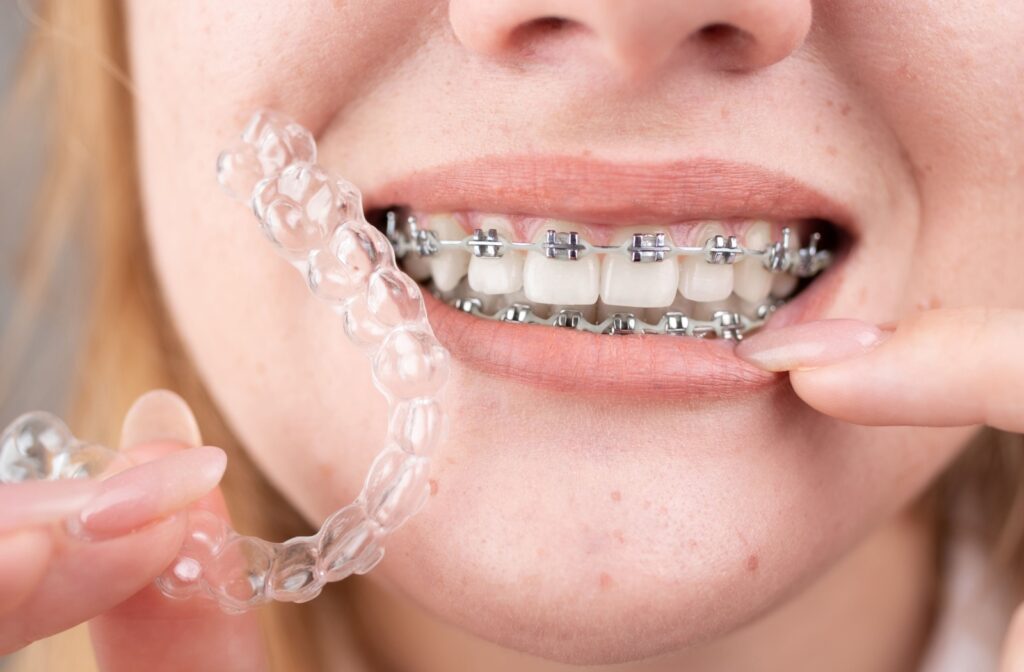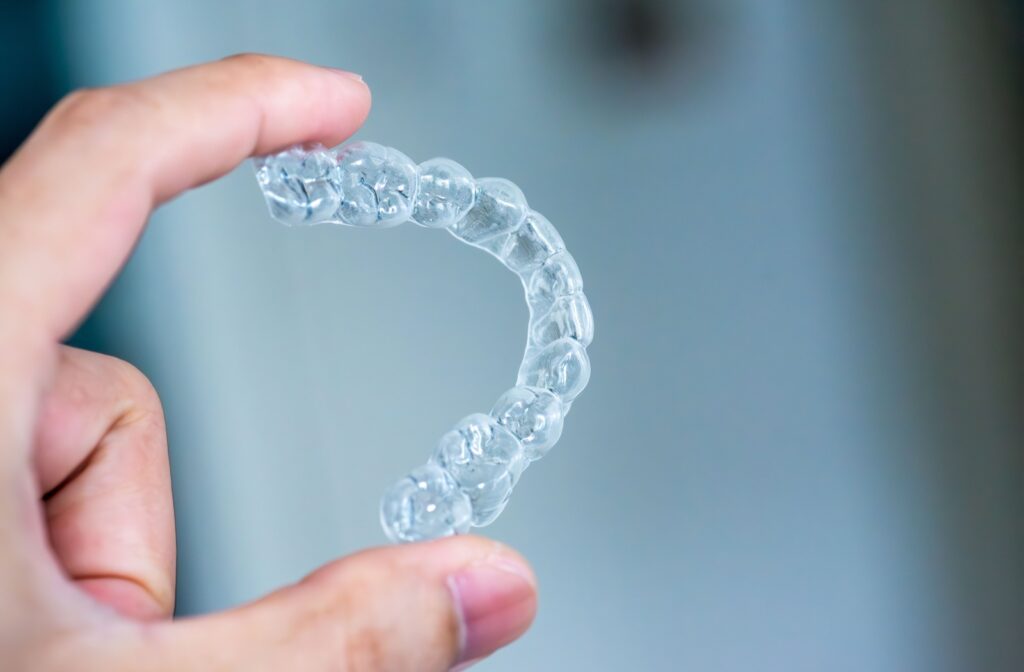When you’re exploring ways to straighten your or your child’s teeth, treatment time is often a top concern. Families often ask us which orthodontic option gets the job done quicker and what the basic differences are between Invisalign clear aligners and traditional braces.
The answer is that the speed of your treatment is less about the method you choose and more about your orthodontic needs. One option isn’t always faster than the other because every smile is different. The timeline ultimately depends on the complexity of your case and your personal commitment to the plan.
A Quick Look at Invisalign & Braces
When you’re considering orthodontic treatment for yourself or your children, you’ll likely compare two popular options—Invisalign and braces. Let’s look at how each one works to straighten smiles. Both are effective tools that help move teeth into their proper positions.
What Is Invisalign?
Invisalign treatment uses a series of clear, custom-made plastic aligners. These trays fit snugly over your teeth and gently shift them into the correct position over time. Once every two weeks or so, you switch to a new set of aligners, and the process continues.
What Are Traditional Braces?
Braces use small brackets attached to each tooth, connected by a thin wire. Your dentist adjusts the wire during regular appointments so that the braces continue to apply steady pressure. This pressure gradually moves your teeth into proper alignment.
The Speed Factor: What Determines Treatment Time?
The timeline for any orthodontic treatment depends on a few key factors. Understanding them can help you set realistic expectations for your journey.
The Complexity of Your Case
The main factor that affects your treatment duration is the orthodontic issue you need to correct. Simpler cases of crooked or gapped teeth may resolve faster. More complex bite problems or significant crowding may require a longer treatment period.
How Each System Moves Teeth
Invisalign aligners apply a broad force across the entire tooth with each new tray. Meanwhile, braces use a wire and bracket system to pull teeth into place. For certain types of tooth movements, one approach may be more efficient than the other.
Your Personal Commitment to the Plan
With Invisalign, your progress is directly tied to how consistently you wear your aligners. For the treatment to stay on schedule, you need to wear them as instructed, which ultimately affects how long Invisalign will take. Braces are attached to your teeth, so the treatment is always active.
Potential Advantages of Invisalign
Many families are drawn to Invisalign for its convenience. Here are a few points that people often consider when making their decision.
- Appearance: The clear aligners are nearly invisible, which can be a big plus for teens and adults who may feel self-conscious about their appearance.
- No Food Restrictions: You remove your aligners to eat, so you don’t have to avoid sticky or hard foods that could damage braces.
- Simple Oral Hygiene: Brushing and flossing are straightforward because you can take the aligners out. Maintaining a consistent daily cleaning routine is much easier.
- Comfort: The smooth plastic trays may cause less irritation to your cheeks and gums than metal brackets and wires might.
Potential Advantages of Braces
Traditional braces have been a reliable orthodontic solution for a long time. They’re effective for a wide range of needs and have a proven track record. Braces remain a common choice for correcting both simple and different types of bites.
- Suited for Complex Cases: Braces can effectively treat a variety of difficult orthodontic issues, including severe bite problems.
- Consistent Force: Since you can’t remove them, braces work around the clock to move your teeth toward their final positions.
- No Daily Removal Needed: There’s no need to remember to take them out for meals or put them back in afterwards, which can be helpful for some.

How Your Daily Habits Influence Treatment Speed
Your routine plays a large role in the success and speed of your treatment. This is especially true with a removable option like Invisalign. Your daily choices directly impact how quickly you see results.
Why You Must Wear Aligners 20-22 Hours a Day
For Invisalign to work as planned, the aligners need to be in your mouth for the recommended time. Wearing them for less than 20 hours a day can slow your progress. This could extend your overall treatment timeline.
The Convenience of Removable Aligners
You need to remove your aligners every time you eat or drink anything other than water. This requires discipline and needs to become a habit that you practice every day during treatment.
What If I Can’t Brush My Teeth After I Eat?
It’s important to clean your teeth before putting your aligners back in. Trapped food particles can increase the risk of cavities. If you can’t brush, rinsing your mouth thoroughly with water is a helpful alternative until you can.
Find the Right Fit for Your Family in SW Calgary
Ultimately, the choice between Invisalign and braces depends on your and your family’s specific needs, lifestyle, and treatment goals. One isn’t better than the other—it’s about finding the right tool for the job. Your comfort and your child’s habits are important factors to consider.
Make an Informed Decision
Consider the pros and cons of each option. Think about what works for your daily schedule—or your child’s. Both paths can lead to a healthier smile when you follow the treatment plan as directed.
Talk About Your Options
The best way to know which treatment might be a better fit for you is to have a conversation with your dentist. At Springbank Dental Centre, we can perform an examination of your or your child’s teeth and provide a personalized recommendation. So book an appointment today.




